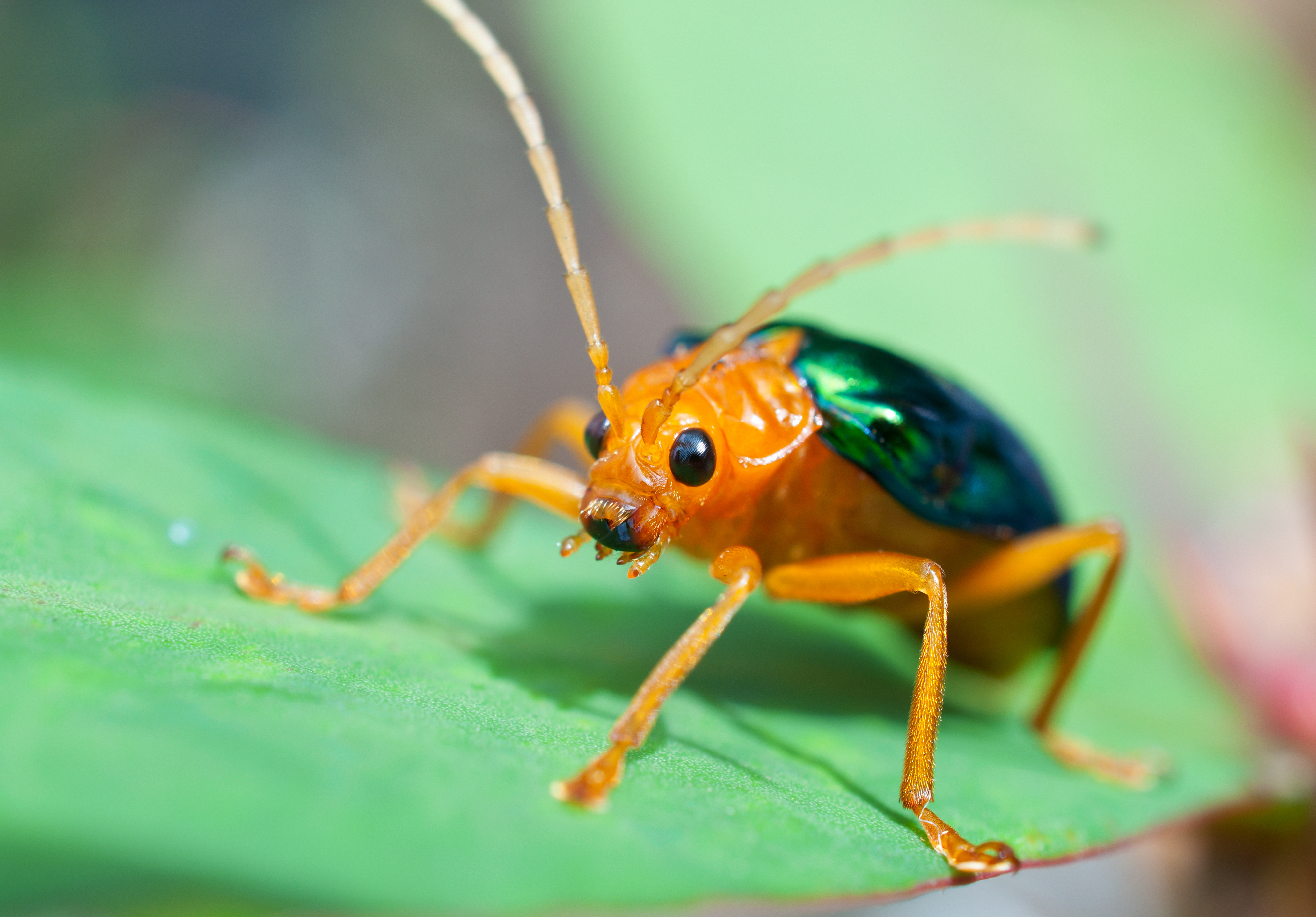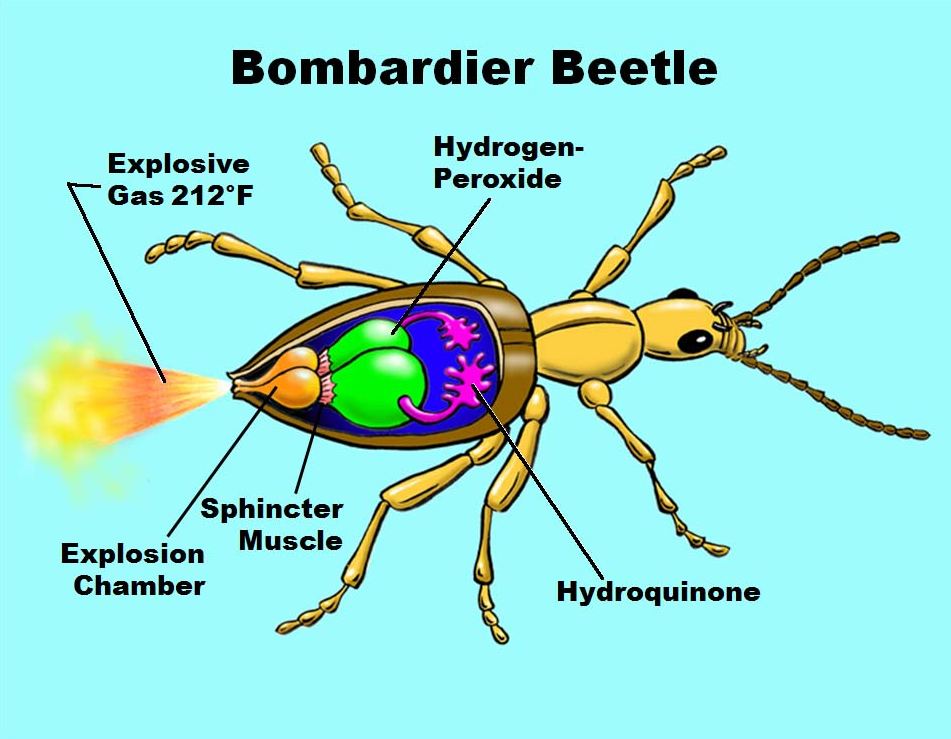
Beetles come in a diversity of shapes and sizes. Ladybugs may be the most familiar and beloved beetle but there are 350,000 described species of beetles. That means there are likely thousands more that scientists don’t know about.
The bombardier beetle is a unique beetle. The beetles live up to their name, defending themselves by shooting boiling hot fluids at their attackers. They are one of the most famous examples of animals using chemical defense.
Little Inconsiderate Beast
Charles Darwin was once attacked by a ground beetle species closely related to bombardier beetles. He detailed the experience in a letter in 1846: “Under a piece of bark I found two Carabi (I forget which) and caught one in each hand, when lo and behold I saw a sacred Panagaeus cruxmajor; I could not bear to give up either of my Carabi, and to lose Panagaeus was out of the question, so that in despair I gently seized one of the Carabi between my teeth, when to my unspeakable disgust and pain the little inconsiderate beast squirted his acid down my throat…'”
Look at the diagram below of a bombardier beetle’s defense system. It’s the heart-shaped explosion chamber, combined with a long, narrow tube that ejects the boiling, toxic liquid, that makes the beetle’s weapon so effective.

As Max Barclay, Senior Curator of the British Museum's beetle collection, explains the science behind a bombardier beetle's detonations. “With an audible pop, these beetles spray a concoction of boiling, irritating chemicals at predators that get too close. The beetles have plenty of ammo and can rapidly fire their chemicals over and over again.”
One African bombardier beetle, Stenaptinus insignis, can aim its spray in virtually any direction. It can target a predator’s individual legs, and even the individual segments of its legs, or the back. Watch this video of a beetle deploying its chemical weapon close-up.
The Unique Catalyst Chemical of Explosion
The liquid that the beetles shoot is made up of separate chemicals. The two chemicals, hydrogen peroxide and hydroquinone do not spontaneously blow up when mixed together. The only time they explode is when the beetle forces them to by adding two catalysts.
It works like this: “The collection bladder collects hydrogen peroxide and hydroquinone, which just sit there without exploding. The explosion chamber collects a brown gooey mixture of enzymes. This chamber has a thick chitin wall with numerous little holes in it through which single-celled glands secrete and deposit the enzymes into the chamber. When the insect becomes excited, a muscle opens up a little door on a hinge. Through this opening the two chemicals are forced into the explosion chamber, where the enzymes make them explode out of the insect's derriere as oxygen, quinone, and water.”
It’s both the speed and the heat that make the spray incredibly effective against potential predators. These beetles really have no successful predators: frogs and toads that swallow them usually spit them or vomit them up if the explosive bombs make it inside the predators’ stomach.
Read more and watch a video of the inside of a bombardier beetle.
















